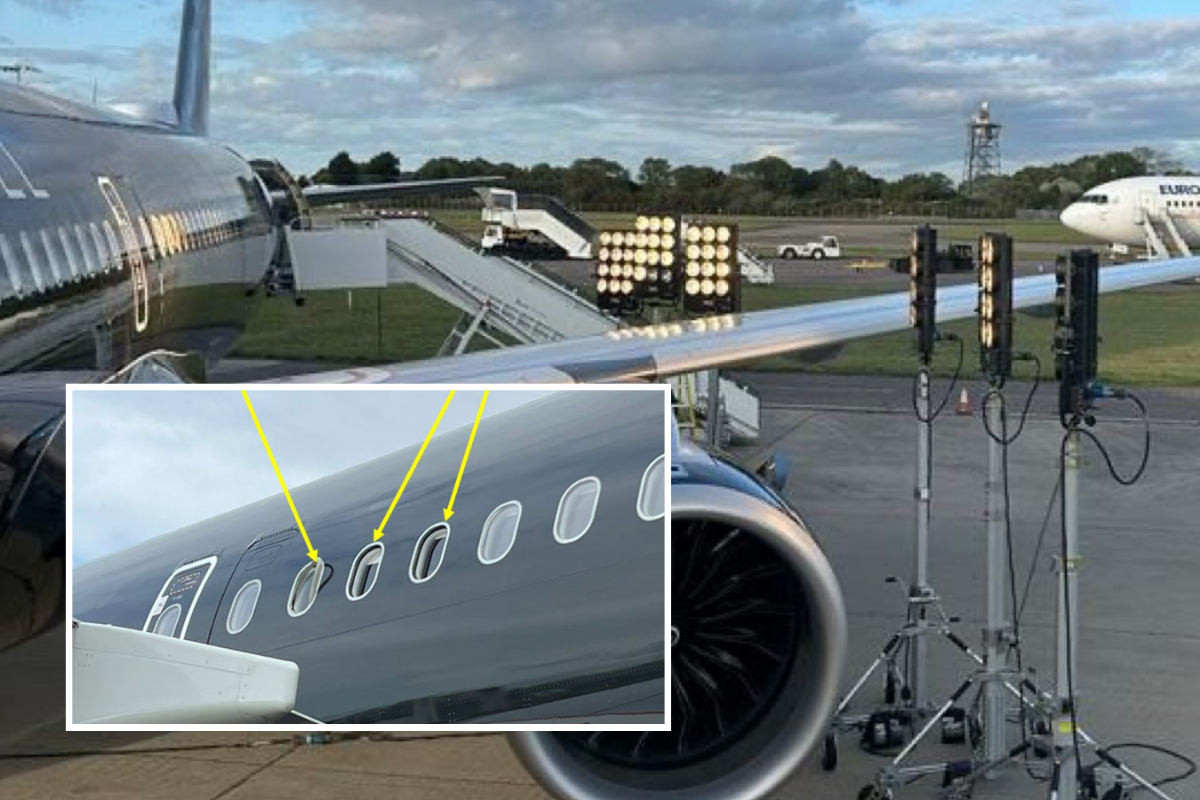
An Airbus A321 passenger jet, which was once used by King Charles and is now hired out as a luxury VIP charter plane, lost three windows shortly after takeoff earlier this month after a powerful film set lighting rig apparently heated up the glass so much that they became distorted and fell out of the window frames.
The incident occurred on October 4, 2023, shortly after the two-year-old aircraft had departed from London Stanstead bound for Orlando with 20 passengers and crew onboard, resulting in the pilots making an emergency return to London.
The aircraft (registration: G-OATW) was originally used by the British government but was recently sold to Titan Airways, a UK-based charter and wetlease airline which planned to fly the A321 out to Florida as part of a luxury charter operation.
Shortly after takeoff, however, the passengers reported that the cabin seemed noisier and colder than normal, although no one was immediately aware of what was unfolding because all the passengers were sat forward of where the windows had come loose.
After the seatbelt signs were switched off, a loadmaster who was on the flight, went back to investigate what was going on and discovered that a windowpane had slipped down which was creating so much noise, they feared it could damage someones hearing.
At this point, the crew only thought one window was affected but this was enough to make an immediate diversion back to London Stanstead.
The aircraft landed without incident, and no one was injured, but it soon became apparent that two windowpanes were completely missing, a third was dislodged and a fourth was protruding abnormally from its sill.
The plane was grounded, and investigators from Britain’s Air Accident Investigation Branch (AAIB) were called in.
Although the investigation is still ongoing, the AAIB issued a rare special bulletin on Friday detailing what they had so far discovered.
It turns out that the day before the flight, the plane had been on the ground for a photo shoot in which a special lighting rig had been set up outside the plane and shone onto the aircraft to mimic a sunrise inside the cabin.
The lights shone on one side of the aircraft for around five and a half hours and on the other side for around four hours.
The AAIB discovered that the damaged panes were deformed and shrunk which meant that they no longer formed an “effective interface” with the rubber seals that helped keep them in place.
In addition, the underside of the left horizontal stabiliser leading edge panel was also found to be punctured.
It would appear that the Maxibrute 12 flood lights used during the photo shoot were positioned between 6 to 9 metres away from the fuselage of the plane, but the manufacturer warns that the minimum distance that these lights should be placed from the object being illuminated is at least 10 metres.
“The windows appear to have sustained thermal damage and distortion because of elevated temperatures while illuminated for approximately four to five and a half hours during filming activity the day before the flight,” the AAIB said in its special bulletin.
Investigators have warned that the outcome could have been very different and could have “resulted in more serious consequences, especially if window integrity was lost at higher differential pressure.”
While the investigation continues, the aircraft has already been repaired and is already back in service. According to Flightradar24, the plane flew from the Cook Islands to Christchurch, New Zealand on November 1.
Mateusz Maszczynski honed his skills as an international flight attendant at the most prominent airline in the Middle East and has been flying ever since... most recently for a well known European airline. Matt is passionate about the aviation industry and has become an expert in passenger experience and human-centric stories. Always keeping an ear close to the ground, Matt's industry insights, analysis and news coverage is frequently relied upon by some of the biggest names in journalism.







